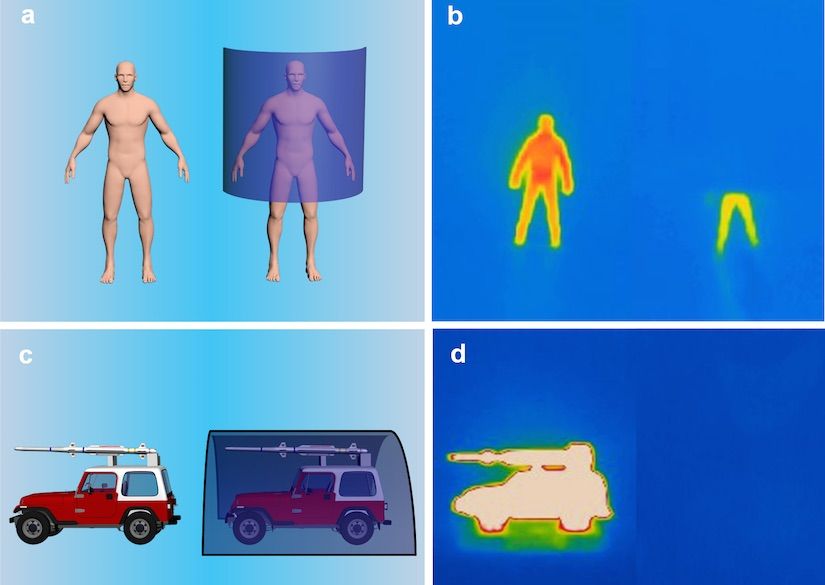
An ultrathin black silicone sheet that works like an invisibility cloak by blocking infrared cameras could save lives in war zones and revolutionize the way soldiers operate on the battleground, scientists say.
This new technology, invented by researchers at the University of Wisconsin-Madison, could change the way troops maneuver on the ground by concealing the heat from their bodies or the heat from a car engine, rendering them nearly invisible to drones' heat-detecting cameras. Scientists are calling them stealth sheets, and they are bendable pieces of silicone that can wrap around the human form, hiding as much as 94 percent of the infrared light.
"Think of it as a sort of camouflage. This could have huge ramifications for how battle is fought," Hongrui Jiang, one of the co-inventors told Newsweek.

The inventors think it could be used to save lives within the next decade. They have a small prototype and are now investigating how to make the devices feasible for large-scale manufacturing.
The sheet can also 'fool' infrared cameras by sending out light frequencies that enable it to blend in with the environment. For instance, a military tank can be made to appear as a guardrail on the side of a road. "This is a disguise to intentionally deceive the detectors," said Jiang.
To create the device, scientists etched a "forest" of silicon needles, called nanowires, into round pieces of silicon. This material absorbs the light that our bodies emit and that is normally invisible to the naked eye but can be detected by the heat-sensing cameras used in war zones. "We all have a heat signature, which means our bodies emit heat in the form of infrared light," said Jiang.
Other devices that can hide body heat are often too bulky, made from expensive silver, and difficult to move with. "We are providing a much more viable and attractive solution to hide the heat signature," said Jiang.
It's possible that technology like this could be a hindrance to United States military operations. The U.S. has launched countless drone strikes in the Middle East to target Islamic extremists. There is the potential that this technology could end up in the wrong hands to protect enemies of the U.S., combat historian Patrick O'Donnell told Newsweek.
"Just look at night-vision goggles. That was something that America dominated the battlefield with, and now, unfortunately, they are in the hands of terrorists."
As technology evolves, so have the ways that soldiers hide from one another. First, they used trees and shrubbery, then they invented camouflage. This stealth sheet is a natural solution to a problem that has long plagued militaries throughout history, said Stephen Prior, a lecturer in unmanned vehicles at the University of Southampton in the U.K.
"In a sense this is nothing new, armies have been hiding from one another [for] millennia," he said.
Uncommon Knowledge
Newsweek is committed to challenging conventional wisdom and finding connections in the search for common ground.
Newsweek is committed to challenging conventional wisdom and finding connections in the search for common ground.
About the writer
Lisa Spear is a science writing fellow at Newsweek. She's previously contributed to a number of other outlets including Time and ... Read more
To read how Newsweek uses AI as a newsroom tool, Click here.








